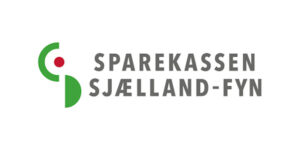Fra BNP Paribas:
The ECB removed its easing bias on QE at its March meeting – another baby step towards a policy exit.
Mario Draghi downplayed the move – rightly so, in our view – as a backward-looking decision with few implications for the ECB’s expectations and/or forward guidance.
Repeated references to the ECB’s reactive mood suggest it will need to see more evidence of inflation converging towards its target before it contemplates the next step towards the exit.
We think a more comprehensive change in forward guidance is unlikely to come before June. The press conference after March’s policy meeting confirmed that the ECB is taking the scenic route in its path towards the removal of policy accommodation.
Mario Draghi downplayed the only significant change – the removal of the easing bias on QE – as a backward-looking decision with no implications on the ECB’s expectations and or its reaction function. The assessment of the economy was very much in line with that provided in January and the projections were little changed from December. The repeated references to monetary policy being reactive rather than proactive in this phase suggest that the ECB will want to see more concrete evidence that inflation is converging towards its aim before moving further towards the exit.
Overall, the statement and press conference suggest to us that the central bank is unlikely to make any change to forward guidance before June and support our long-held view that it will refrain from ending QE abruptly but will instead prefer to taper asset purchases in Q4. Below are the key elements of the press conference with our comments in Italics.
Incoming information confirmed that the economic upswing is strong and broad based. The staff projections were little changed from December. Growth for this year was tweaked 0.1pp higher to 2.4%. Inflation was revised slightly lower for 2019, but this mainly reflects technical changes due to oil prices, as the core inflation profile was left unchanged.
The growth revision was very much in line with our expectations and, in our view, the forecasts remain conservative. It is interesting, however, that the ECB keeps revising growth up while leaving inflation projections unchanged. As the bank insists the Phillips curve framework is still valid, it implies it might have underestimated the amount of economic slack as Mr Draghi himself seemed to imply.
The underlying trend in inflation is still subdued. While the ECB has grown more confident about inflation converging towards its aim, this is still conditional on ample monetary accommodation and subject to uncertainty, which calls for both persistence and patience. This is very much in line with the assessment made in January, reflecting the lack of concrete evidence of a change in trends in core inflation.
While the decision to remove the easing bias was unanimous, there was some divergence of opinion on the degree of confidence relative to the uncertainty surrounding the inflation outlook, and the ECB will remain in a reactive mood. The reference to “reactive” is important. It suggests that, given the divergence of opinion on the best course of action, data will effectively decide. This, in turn, suggests to us than any further change in the language is unlikely before the next round of projections in June.
Risks on growth were still described as “broadly balanced”, as upside risks on the domestic side, especially in the short term, were offset by downside risks stemming from global developments. Among those, Mr Draghi added protectionism and financial deregulation, and (in response to a journalist’s question) the potential drag on confidence from protracted political instability in countries such as Italy.
At the margin, the news flow since the January meeting has not been favourable. While still
very high, leading indicators moved off their peaks. The prospect of US tariffs and the risk of retaliation added another item to the list of potential downside risk. This is probably another reason why Mr Draghi dubbed the decision to remove the easing bias as “backward
looking”.
The Governing Council, Mr Draghi said, discussed the level of potential growth and the size of economic slack with a view that both might be bigger than initially estimated.
The comments tie in well with the discussion mentioned in the account to the January
meeting on the level of the NAIRU and would explain, at least partially, inflation’s lack of
responsiveness to the more positive growth outlook.
If the output gap is bigger than initially estimated, the ECB has less rush to remove policy accommodation. These comments again point to a cautious approach.
On QE, Mr Draghi mentioned that stocks and flows are complementary and similarly important in determining the degree of monetary accommodation. Flows, while diminished, continue to matter a lot, according to the ECB president, not least because of the sequencing, which is set in stone.
While not committal, this gives an important insight into the ECB’s thinking. Among other channels, QE works by strengthening the forward guidance, given the sequencing. This is the key reason why we continue to believe that the ECB will attempt to postpone the debate on rate increases by tapering asset purchases in Q4 before ending the programme.
In summary, the direction is clear and today the ECB took another baby step towards the exit by removing its easing bias on QE. This is not big news, however, as virtually no one in the markets expected the ECB to increase its asset purchases in the near term. All other aspects of the ECB communication were left unchanged, confirming its very gradual approach to the removal of policy accommodation.
The overall dovish tone of the press conference and the reference to a reactive approach
suggest to us that the next move – which we expect to be a more comprehensive change in its forward guidance – is unlikely to come before June, when the next projection round is due. We reiterate our view that the ECB will not end QE purchases abruptly in September.







